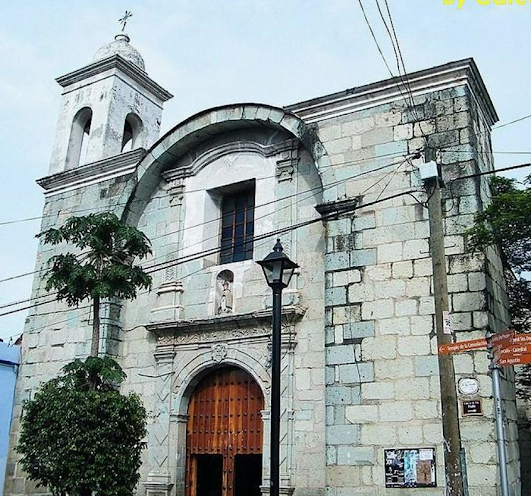We journey south beyond the city of Oaxaca to the remote Zapotec village of Ozolotepec in the rugged Sierra Sur of Oaxaca.
At the heart of the community stands the 17th century church of Santa Maria Ozolotepec. The broad, much rebuilt church front presents a modified retablo facade flanked by stubby single tier bell towers. Statues of Sts Peter and Paul occupy niches on either side of the arched west doorway.
Ozolotepec. The nave after the 2017 earthquake.
Inside, the expansive single nave is covered by a spectacular, painted, beamed ceiling hung with spindles. Several baroque altarpieces line the nave, most notably the main retablo and the side altarpiece of St Antony.
The Main Retablo
Bankrolled, like the church as a whole, by the eminent cleric Pedro de Otálora Carbajal, who also funded the building of the famous Sanctuary of La Soledad in the city of Oaxaca, the main altarpiece showcases a number of paintings. These include portraits of St Dominic, St Lawrence and St Gregory as well as Catherine of Alexandria and the Archangel Michael.
The side retablo of San Antonio is of perhaps greater historical interest.
In the center panel, cast in the form of a scene of Purgatory, the commanding figure of St Anthony stands above the struggling souls (animas) , among whom is, on the left, a bearded figure being rescued by an angel, thought to represent the church patron Otálora, and on the right an indigenous man assumed to be a prominent native figure and possible donor of the altarpiece, touching the cord of the saint's robe.
photography by Fernando Herrera
text source: UN PÁRROCO EMPRENDEDOR Y LITURGISTA:
EL RETABLO DE SANTA MARÍA OZOLOTEPEC Selene del Carmen García Jiménez (2001)
* Aficionados may be interested in a beautiful modern house currently for rent in a select suburb of Oaxaca City. For longer term rental only. Contact the owner at: cwinteroax@gmail.com
























